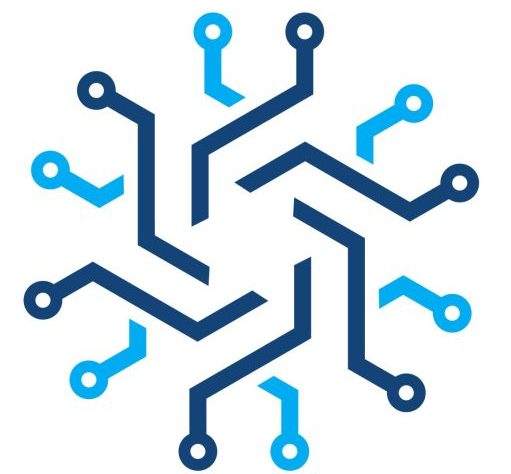Blockchain technology is a revolutionary digital ledger system. It has changed how we view financial transactions and information management. The New York Times has explored this innovation as a potential game-changer across industries.
Blockchain works as a decentralised digital ledger recording transactions across computer networks. This structure allows for unmatched transparency and security. It removes the need for central authorities in transaction verification.
The Ethereum network showcases blockchain’s potential. It operates as a global system of computers verifying transactions through complex maths. Transaction verification takes only minutes, hinting at a more efficient financial future.
Digital ledger technology has shown remarkable growth potential. Projections suggest the global blockchain market could reach £1.1 trillion by 2030. These figures highlight the transformative power of this innovative approach.
NYT blockchain reporting emphasises the technology’s versatility. It covers applications from cryptocurrencies to media authentication. The News Provenance Project explores blockchain’s potential in verifying journalistic content.
Understanding Blockchain Technology Through NYT’s Lens
Blockchain is a groundbreaking digital record-keeping system. It transforms how we manage, verify, and share vital data across networks. This technology reimagines information storage and distribution in the digital world.
Decentralised ledger technologies have revolutionised the digital landscape. These systems distribute information across multiple network participants. This approach differs greatly from traditional database management methods.
The Digital Ledger Concept
A digital ledger is a transparent, unchangeable record-keeping tool. Blockchain principles ensure complete transparency of transactions. They also guarantee permanent and unalterable record storage.
Additionally, blockchain uses distributed verification processes. This differs from traditional centralised databases in several key ways.
- Complete transparency of transactions
- Permanent and unalterable record storage
- Distributed verification processes
Decentralised Nature of Blockchain
Blockchain’s decentralised nature is its most innovative feature. Public domain protocols allow multiple participants to maintain and verify records simultaneously. This eliminates single points of failure, enhancing the system’s reliability.
| Traditional Database | Blockchain System |
|---|---|
| Centralised Control | Distributed Verification |
| Single Server Management | Multiple Network Participants |
| Vulnerable to Manipulation | Cryptographically Secured |
Public Domain Protocols
Blockchain’s public domain protocols create a robust ecosystem. They maintain data integrity through complex cryptographic mechanisms. This approach ensures transparency and security in digital transactions.
It also fosters unprecedented levels of trust. These features make blockchain a powerful tool for various industries and applications.
What Is Blockchain NYT? A Critical Analysis

The New York Times critically examines blockchain technology’s potential and challenges. Their investigative approach reveals both promise and limitations in blockchain applications.
The NYT’s Research and Development team conducted a groundbreaking experiment. Their prototype used blockchain to display news photo metadata on simulated social media platforms. This showcased innovative digital verification methods.
- Blockchain criticism centres on technological complexity
- Experimental applications challenge traditional information verification
- Media organisations explore decentralised information authentication
Key blockchain applications investigated by NYT include:
| Domain | Blockchain Potential | Challenges |
|---|---|---|
| Journalism | Metadata verification | Technical complexity |
| Media Authentication | Source tracking | Scalability concerns |
| Digital Rights | Transparent ownership | Regulatory uncertainties |
The NYT’s analysis shows blockchain’s potential to transform digital information management. It maintains a balanced view on current technological limitations.
The Cryptocurrency Connection and Market Impact
Cryptocurrencies have transformed the financial world, linking blockchain and digital assets. This new frontier has drawn millions of investors globally. The market’s rapid growth shows its revolutionary potential.
Crypto markets are known for their extreme ups and downs. These shifts can quickly change investors’ fortunes. Approximately 20% of American adults now own cryptocurrency, showing its growing acceptance.
From Bitcoin to Market Volatility
Bitcoin’s story shows how unpredictable the crypto market can be. Here are some key facts about crypto traders:
- The average cryptocurrency trader is 38 years old
- 55% of traders lack a college degree
- 44% of crypto traders represent diverse racial backgrounds
- 41% of cryptocurrency traders are women
FTX Collapse and Industry Implications
The crypto sector has faced major hurdles, with big companies failing. FTX’s collapse shook the industry to its core. This event showed the need for stronger rules in blockchain finance.
The “Crypto Winter” Phenomenon
Experts call the current market slowdown a “Crypto Winter”. It’s a time of less trading and lower investor trust. The crypto market is currently valued at approximately $1.75 trillion.
This value shows the sector’s strength, despite recent problems. The crypto world keeps changing, pushing against old money ideas.
The cryptocurrency landscape continues to evolve, challenging traditional financial paradigms.
Blockchain’s Social and Demographic Impact
Blockchain adoption is shifting demographics in surprising ways. A 2021 survey showed that the average crypto trader is under 40. About 55% lack a university degree, challenging traditional views.
The survey revealed more diverse participation. 44% of crypto traders come from non-white backgrounds. Women make up 41% of traders, breaking stereotypes in the field.
Blockchain is becoming a tool for financial inclusivity. It allows people from various backgrounds to access global markets. This technology offers marginalised groups chances to create digital identities.
Emerging markets stand to gain from blockchain innovations. These regions can use blockchain to overcome financial hurdles. It reduces costs and provides transparent transactions.
Blockchain is reshaping social and economic structures globally. It enables digital identities and eases cross-border transactions. This technology paves the way for more accessible financial systems worldwide.











